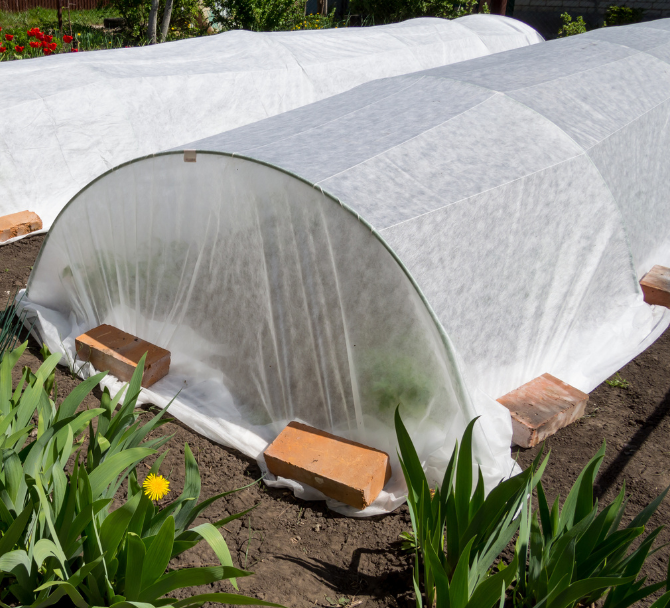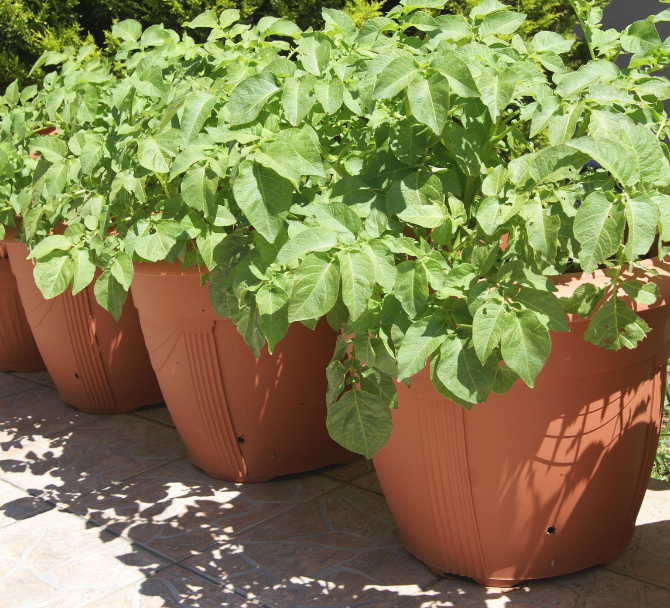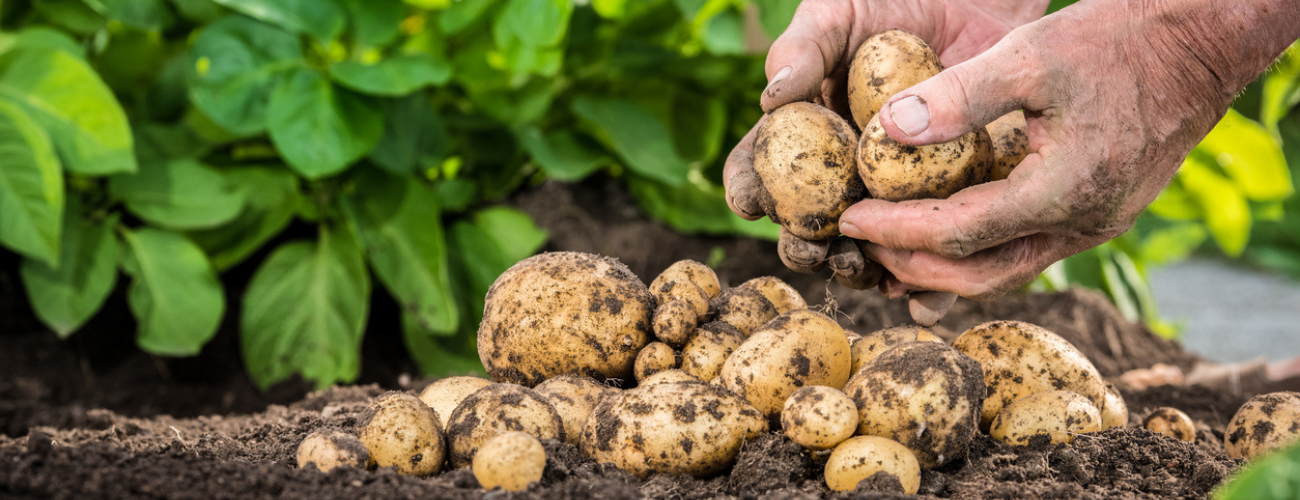It’s that time of year when allotment holders and veg growers are beginning to harvest their potatoes. First earlies from June and second earlies from July. Maincrops come later in the summer. Uncovering the buried treasure, boiling them in a pot and slathering them with butter and maybe a little fresh mint is delicious. But the taste of homegrown new potatoes does not need to be restricted to summer. With a little bit of effort and good timing you could also be eating them with your Christmas dinner.
Unfortunately you can’t use the ones you dig up in June and July and replant a few for Christmas because they go into a period of dormancy after harvesting and won’t grow. It’s unlikely you could use supermarket potatoes either for the same reason. You will need to buy cold stored tubers that have been held back from last winter. First and second earlies are ideal and do not need to be chitted because they are going straight into warm soil. Most take about 12 weeks from planting to cropping. So if you plant in July you could be ready to harvest from the end of October. For Christmas dinner, plant your potatoes in August, protect them from frost, and you can be harvesting delicious new potatoes for the big day. Potatoes can be left in the soil for a month after they are ready.

If you have access to a polytunnel or greenhouse, you can plant straight into the ground or in sheltered gardens with well-drained soil use cloches or grow tunnels with fleece covers as the weather gets colder, covering with straw will also help to insulate your potatoes until harvesting. If your soil is heavy and prone to be wet or you are in a cold spot you may be best to plant into a container so that the potatoes can be moved to a frost free greenhouse or bright porch.

For container planting, a 30cm pot can hold one plant whereas a dustbin sized container can hold 4. Fill the bottom third with multipurpose or vegetable compost, place potatoes 20-30cm apart on the top and cover with about 15cm of compost. Water well and place in a bright spot. When you see leaves showing add another layer of compost and repeat until you reach the top of the container. Protect from frost. Once the foliage dies down keep them fairly dry until harvesting.

For growing in the soil, choose a warm sunny spot and plant each tuber at least 30cm apart and at the bottom of a trench or at least 10cm deep and as the shoots grow use a rake or hoe to draw more soil over the top to create a mounded ridge. This is known as earthing up. Once the foliage has died down in the autumn, leave them protected until harvesting. Protect from frost.
Autumn grown potatoes grown outside can be prone to blight, protection from a cloche or growing tunnel will help prevent that; indoor grown potatoes are rarely affected. The initial symptoms of blight are a rapidly spreading brown rot, affecting leaves, and stems. Removing all top growth at the first sign means you may still have intact potatoes under the soil. Do not compost diseased plant matter.
Even if you only have space for a one container, growing your own potatoes is really worthwhile. Nothing beats the freshness and flavour. Serving potatoes grown with your own hands can bring a sense of pride and satisfaction to your Christmas dinner. It adds a personal touch to the meal and allows you to share your gardening achievements with your family and guests.

By our resident horticultural expert











